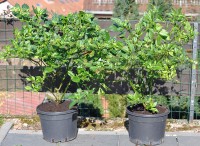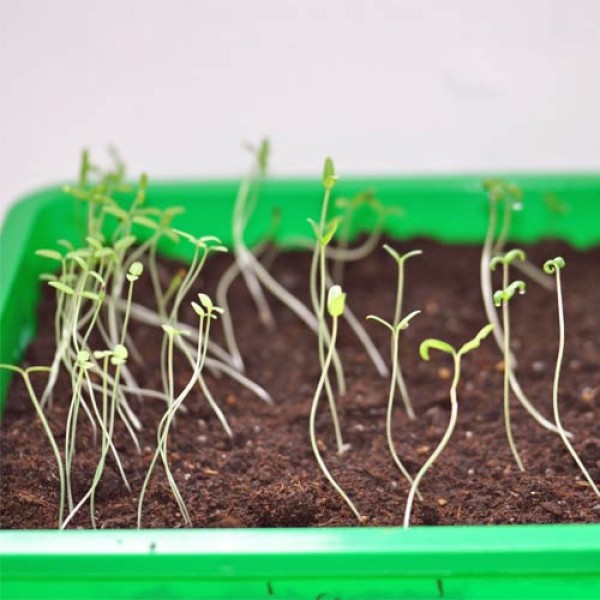
Threats to chilli seedlings
... and how to prevent them.
When the first chilli seedlings appear a few days or even weeks after sowing, there are a few threats that can lead to premature death.
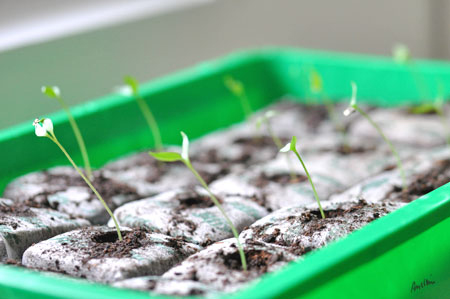
Legginess
Too little sunlight at warm temperatures (>23°C) causes the seedlings to grow very tall (> 5 cm) to get closer to the light source. As the seedling gains height, it sacrifices in girth and strength, resulting in thin, pale, fragile, stretched-out stems, that become unstable and may fall over.
Preventive measures:
-sufficient light: south-facing window, greenhouse, plant lamp
-Pay attention to the temperature (20 - 23°C), with sufficient light it may also be warmer.
In case of occurrence:
-Remove from the heating mat (if used).
-Provide sufficient light as soon as possible, preferably with a plant lamp.
-Support with a toothpick, but do not tie up, as the stems are too fragile.
-Prick out quickly. When pricking out/transplanting, plant so deep that only a little of the stem is visible (almost up to the cotyledons).
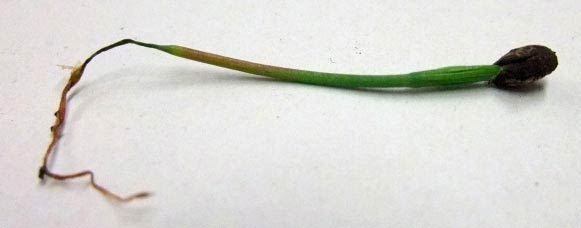
Damping off
Damping off is caused by a number of different pathogens (fungi) that attack seedlings and young plants. If the fungus attacks the roots, the seedling wilts, if it attacks the stem, it becomes thin and gets stem lesions at ground level, so that it falls. Often the seed leaves show small round gray spots with black dots.
Preventive measures:
- Use high-quality, thermally treated growing soil.
- Pickle/pre-treat seeds, e.g. in camomile tea or a herbal decoction of garlic, horsetail, valerian or horseradish.
- Do not plant seeds too close together.
- Ensure good ventilation.
In case of infestation:
- Remove infested plants with root ball and soil immediately so that the fungus does not spread further.
Image source: Wikipedia, INAKAvillage211
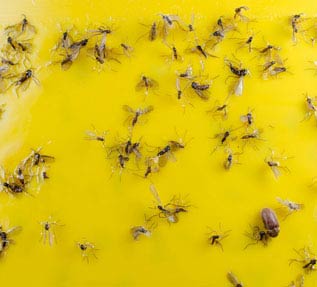
Dark-winged Fungus Gnats
Fungus gnats are small, dark-coloured flies (approx. 2 - 4 mm in size) that like to spread explosively in potted crops. They like to lay their eggs in moist, humus-rich soil, from which numerous 1-2 mm long, white larvae hatch after a few days. They feed on roots and stems, especially on young plants and seedlings. Usually their eggs are introduced through potting soil or coco soil.
Preventive measures:
- Use high-quality, thermally treated soil.
- Cover the top layer of soil with quartz sand. This prevents the fungus gnats from laying eggs.
- Use neem net coins or neem soil.
In case of infestation:
- Apply yellow stickers as soon as you discover the first fungus gnats.
- Spray with garlic decoction or with diluted neem oil (to do this, mix one litre of water with 4 ml neem oil and 1 ml rimulgan and put it in a spray bottle)
- Stick strokes of oil into the soil - the sulphur should drive away the larvae
- Apply nematodes (available in specialised shops).
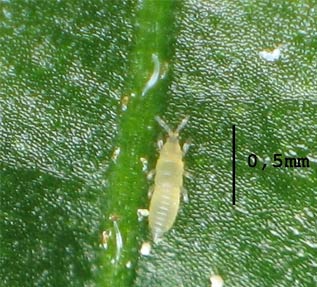
Thrips
Thrips are small elongated insects, about 1 - 2 mm long with fringed wings. At first glance they resemble a tiny stick. Their larvae resemble tiny light green or yellowish worms. The adult thrips bite leaf cells and suck them dry, recognisable by shiny silvery spots and dark droppings on the undersides of the leaves. The pests can also transmit viruses and cripple young plants.
Preventive measures:
- Use high-quality, thermally treated soil.
- Frequent airing
In case of infestation:
- Spray with plant decoction made from garlic, nettle or with diluted neem oil (to do this, mix one litre of water with 4 ml of neem oil and 1 ml of rimulgan and put it in a sprayer bottle)
- Introduce natural predators such as predatory mites, nematodes or lacewing larvae (available in specialised shops).
Image source: Wikipedia, M.J.



 Crash Course Chilli Cultivation
Crash Course Chilli Cultivation 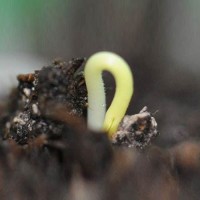 Chili Cultivation Instructions
Chili Cultivation Instructions 


